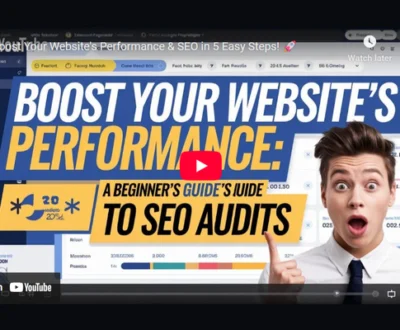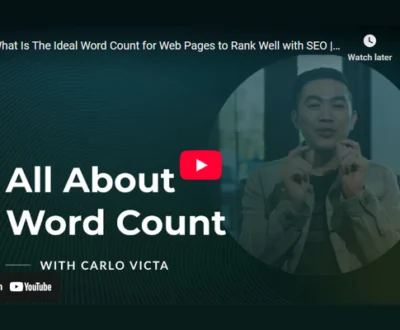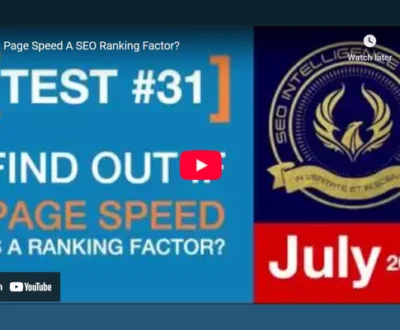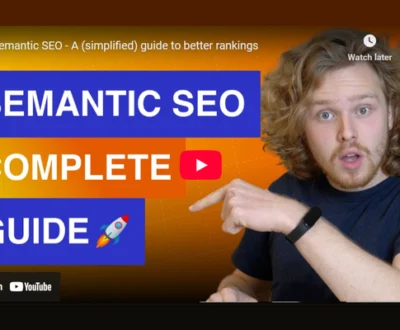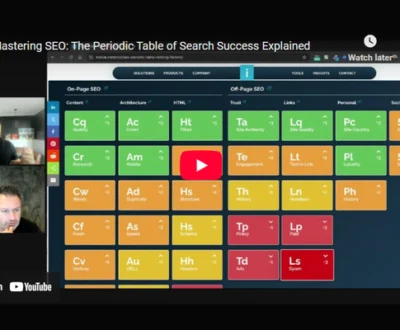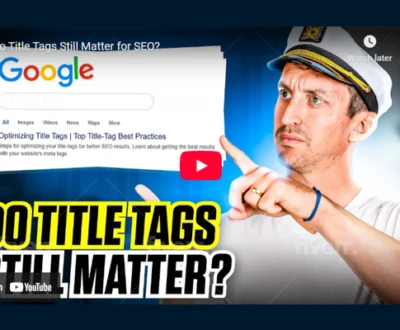I’ve seen firsthand how vital keyword research is for e-commerce SEO because it reveals what customers actually search for and helps tailor product pages to match their intent. By targeting specific, often long-tail keywords, you attract qualified buyers ready to purchase, boosting organic traffic and conversions. Combining this with competitor insights uncovers new opportunities while lowering ad costs. Proper keyword use across your site guarantees better visibility and sales. Keep exploring these strategies to deepen your SEO impact.
- Key Takeaways
- Why Keyword Research Is Essential for E-Commerce Success
- How Keyword Research Boosts Organic Visibility
- Leveraging Competitive Analysis to Discover New Opportunities
- Crafting a Full-Funnel Keyword Strategy for Online Stores
- Aligning Keywords With User Search Intent for Better Conversions
- Using Long-Tail Keywords to Target Specific Buyer Needs
- Tools and Techniques to Optimize Keyword Research Efforts
- Enhancing Product Page SEO Through Strategic Keyword Use
- Reducing Advertising Costs With Effective Keyword Targeting
- Measuring the Impact of Keyword Research on E-Commerce Growth
- Frequently Asked Questions
- How Often Should Keyword Research Be Updated for an Ecommerce Site?
- Can Keyword Research Improve Voice Search Optimization in Ecommerce?
- What Role Do Branded Keywords Play in Ecommerce SEO?
- How Do Seasonal Trends Affect Ecommerce Keyword Strategies?
- Is Keyword Research Different for International Ecommerce Markets?
- Final Thoughts
Key Takeaways
- Keyword research reveals customer intent and aligns product listings with buyer needs, boosting engagement and sales potential in e-commerce.
- Targeting high-intent, transactional, and long-tail keywords enhances organic visibility and attracts buyers ready to purchase.
- A full-funnel keyword strategy captures customers at all stages, from awareness to conversion, optimizing SEO impact.
- Using long-tail keywords improves ranking with lower competition and attracts highly qualified, ready-to-buy visitors.
- Competitive keyword analysis uncovers gaps and opportunities, reducing advertising costs and improving keyword targeting efficiency.
Why Keyword Research Is Essential for E-Commerce Success
Although many factors contribute to e-commerce success, keyword research stands out as a fundamental element that can’t be overlooked. By studying keyword trends and analyzing search behavior, I can identify the exact phrases customers use, which reveals their real needs and preferences.
This understanding helps me align product listings more closely with customer intent, whether they’re seeking information, making a purchase, or comparing options. Differentiating between these intents guarantees that I target keywords that truly resonate, increasing engagement and sales potential.
Furthermore, keyword research provides valuable insights that guide the development of content and product offerings tailored to what customers want. This targeted approach not only improves relevance but also helps me stay current with evolving search patterns. Ongoing optimization is necessary due to evolving keywords, consumer sentiments, and competitor strategies.
Without this knowledge, it’s difficult to meet customer expectations or compete effectively, making keyword research an essential foundation for any e-commerce strategy.
How Keyword Research Boosts Organic Visibility
When I conduct keyword research with a focus on boosting organic visibility, I aim to identify high-intent search queries that indicate a customer is ready to make a purchase. This means targeting transactional keywords like “buy” or “discount” and prioritizing long-tail keywords that fit niche needs.
I analyze search volume and keyword trends to find phrases that strike the right balance between popularity and competition. Using these insights, I optimize on-page content by placing primary keywords in titles, meta descriptions, and headers, improving relevance for search engines. This approach strengthens page authority and reduces keyword cannibalization. Additionally, targeting low keyword difficulty keywords first can help build authority before competing for more competitive terms.
Here’s what I focus on to boost organic visibility:
- Tracking search volume and seasonal keyword trends to capitalize on peak periods
- Using clustered keyword strategies to dominate related search terms
- Mapping keyword intent to specific product pages for maximum relevance
This method helps increase your site’s average ranking position and impression share effectively.
Leveraging Competitive Analysis to Discover New Opportunities
When I analyze competitors’ keywords, I often spot gaps where they aren’t fully addressing certain search terms, which opens up new opportunities for my own site.
Identifying these market opportunities helps me focus on strategic keyword targeting that can improve rankings and attract more relevant traffic.
Competitor Keyword Gap
Since understanding where your competitors succeed can reveal untapped opportunities, conducting a competitor keyword gap analysis is essential for refining your SEO strategy.
This process helps identify keyword opportunities your competitors rank for but you don’t, allowing you to target overlooked terms and improve your market share.
I use tools like Ahrefs or Seodity to conduct this competitor analysis efficiently.
Here are three vital steps I follow:
- Identify top competitors ranking for your target keywords.
- Use keyword tools to find gaps between your site and theirs.
- Prioritize keywords based on search volume and difficulty for better ROI.
Market Opportunity Identification
Building on the insights gained from competitor keyword gap analysis, identifying market opportunities requires a broader look at the competitive environment and customer behavior. By examining market trends and consumer insights, I can uncover unmet needs or emerging demands that competitors might overlook. Competitive analysis reveals strengths, weaknesses, and content gaps, guiding where to focus efforts. Understanding economic factors and regulations also shapes opportunity assessment.
| Aspect | What to Analyze | Benefit |
|---|---|---|
| Competitor Landscape | Strengths, weaknesses, content | Spot gaps and innovation areas |
| Consumer Behavior | Preferences, pain points | Tailor offerings to demand |
| Market Trends & Data | Economic shifts, sales patterns | Anticipate and capitalize |
This all-encompassing approach helps me discover valuable opportunities beyond simple keyword targeting.
Strategic Keyword Targeting
Although identifying market opportunities sets the stage, strategic keyword targeting lets me capitalize on those insights by refining how I approach SEO.
By leveraging competitive analysis, I can uncover gaps and new keyword possibilities that align with semantic relevance, ensuring my content resonates with search intent.
Keyword clustering helps me group related terms, improving content structure and avoiding cannibalization.
To maximize effectiveness, I focus on:
- Analyzing competitors’ keyword strategies using tools like SEMrush and Ahrefs
- Filling keyword gaps with long-tail, product-specific terms
- Structuring content naturally, integrating keywords into titles, headings, and descriptions
This method enhances visibility while maintaining SEO best practices, allowing me to target keywords strategically and boost my e-commerce site’s performance.
Crafting a Full-Funnel Keyword Strategy for Online Stores
When crafting a full-funnel keyword strategy, I focus on selecting keywords that match each stage of the buyer’s journey, from awareness to purchase.
This means using broad, informational terms at the top of the funnel and more specific, transactional keywords as customers move closer to buying.
Funnel Stage Keywords
Since online shoppers progress through different stages before making a purchase, crafting a keyword strategy that aligns with each funnel stage is vital for e-commerce success.
Funnel stage keywords help with funnel optimization by matching content to the buyer’s journey: Awareness, Consideration, and Conversion. Effective keyword mapping organizes terms by intent, improving relevance and boosting conversions.
Here’s how I approach it:
- Awareness stage uses broad, informational keywords to educate and build trust.
- Consideration stage focuses on comparison and evaluation keywords to support decision-making.
- Conversion stage targets action-oriented keywords signaling purchase intent.
This structured approach guarantees content meets user needs at every point, maximizing engagement and sales opportunities efficiently.
Buyer Intent Targeting
Buyer intent targeting plays an essential role in crafting a full-funnel keyword strategy for online stores. By applying intent classification, I can identify whether a keyword shows transactional, commercial, or informational intent. This helps me tailor content that matches where customers are in their buying journey.
Keyword clustering is another critical step, grouping related keywords by intent to cover multiple stages efficiently. For example, long-tail keywords often show clearer buyer intent and can be clustered with broader short-tail terms to attract a wider audience.
Using tools to analyze these clusters and intent types lets me optimize product pages, blog posts, and ads accordingly. This approach improves relevance, boosts conversions, and enhances search engine rankings by aligning content with what buyers are actually searching for.
Aligning Keywords With User Search Intent for Better Conversions
Although keyword research is often seen as a basic SEO task, aligning keywords with user search intent is crucial for driving meaningful e-commerce conversions. Understanding keyword intent helps me create content that directly matches what users want, increasing engagement and trust.
This content alignment guarantees visitors find exactly what they expect, reducing bounce rates and boosting sales potential.
To effectively align keywords with intent, I focus on:
- Mapping keywords to specific content types, such as blogs for informational queries and landing pages for transactional searches.
- Using intent-focused keyword groups to prevent mixed messages and tailor calls to action.
- Regularly auditing content to keep keywords relevant as user behavior shifts.
Using Long-Tail Keywords to Target Specific Buyer Needs
Using long-tail keywords lets me target buyers who’ve very specific needs, which often means they’re closer to making a purchase.
These phrases usually have lower competition, making it easier to rank and attract qualified visitors to my site.
Benefits of Long-Tails
When you focus on long-tail keywords, you tap into a more precise and effective way to reach potential customers. The long tail advantages lie in their keyword specificity, which allows you to connect with users who’ve clear purchase intentions. These keywords often consist of three or more words, making them highly targeted.
Here are three key benefits of using long-tail keywords:
- They reduce competition, making it easier to rank higher in search results.
- Lower keyword difficulty means you need less effort and fewer backlinks to achieve good rankings.
- Higher conversion rates result from attracting visitors closer to making a purchase.
Finding Buyer Intent
Because long-tail keywords are highly specific, they reveal clear buyer intent that helps you target customers with particular needs or problems.
By analyzing buyer behavior and current keyword trends, I’ve found that these detailed phrases—like “best waterproof hiking boots for long treks”—show exactly what users want. They often indicate readiness to purchase or solve a problem, which means you’re reaching people further down the conversion funnel.
Long-tail keywords also attract niche audiences and face less competition, making it easier to rank well. Plus, with the rise of voice search, these conversational queries capture traffic that short keywords miss.
Using long-tail keywords strategically lets you align your SEO efforts with precise buyer intent, driving more qualified visitors to your e-commerce site and boosting your chances of converting them into customers.
Tools and Techniques to Optimize Keyword Research Efforts
Although keyword research might seem straightforward at first, optimizing your efforts requires a thoughtful combination of the right tools and proven techniques.
I rely on keyword selection strategies and keyword analysis techniques to uncover valuable opportunities that drive traffic and sales. For instance, tools like Ahrefs and Google Keyword Planner help me analyze search volume and competition, while Helium 10 is excellent for product-specific keyword insights.
Beyond tools, I emphasize techniques such as competitor analysis and identifying long-tail keywords to target niche markets effectively.
Here are three key approaches I use to optimize keyword research efforts:
- Competitor analysis to find keyword gaps and untapped opportunities
- Utilizing long-tail keywords for more targeted, less competitive search terms
- Testing and refining keywords continuously based on performance metrics
Combining these tools and techniques guarantees my keyword research remains strategic and aligned with market demands.
Enhancing Product Page SEO Through Strategic Keyword Use
Since product pages serve as the final touchpoint before a purchase, optimizing them with strategic keyword use is essential to improve visibility and drive conversions. Keyword alignment guarantees product names, titles, and metadata precisely match target search queries, enhancing product relevance. This focus avoids internal competition by targeting specific product-level keywords rather than broad category terms.
Here’s a quick overview of key elements to optimize:
| Element | Importance |
|---|---|
| Product Name | Reflects brand, model & features |
| Title & Meta Description | Includes primary, high-converting keywords |
| URLs & Metadata | Embeds targeted keywords clearly |
Additionally, incorporating user-generated content like reviews and FAQs adds natural keyword diversity, improving semantic coverage and trust. Optimizing images with relevant alt text and using keyword-rich calls to action further support SEO and conversions. By carefully structuring keyword use across these page elements, you strengthen your product page’s search engine signals and better meet buyer intent.
Reducing Advertising Costs With Effective Keyword Targeting
When you focus on effective keyword targeting, you can considerably reduce your advertising costs while boosting campaign performance. By applying keyword segmentation, I narrow down my audience to high-intent searchers, which improves advertising efficiency and minimizes wasted spend.
Targeting long-tail keywords, for example, lowers competition and cost-per-click, while aligning ads more closely with shopper intent. Additionally, using negative keyword filters blocks irrelevant queries, preventing budget drain on non-converting traffic.
Here are three strategies I use to enhance advertising efficiency through keyword targeting:
- Target high-convert long-tail keywords to reduce CPC and increase conversion rates.
- Implement negative keyword filters regularly to exclude irrelevant searches that waste budget.
- Optimize keyword match types, combining broad, phrase, and exact matches for balanced reach and cost control.
This approach guarantees my ad budget focuses on keywords that deliver the best return, making campaigns more cost-effective and impactful.
Measuring the Impact of Keyword Research on E-Commerce Growth
Effective keyword targeting plays a significant role in shaping e-commerce growth by directly impacting organic visibility and traffic. To measure this impact, I focus on tracking keyword trends and conducting thorough market analysis.
For instance, monitoring how many keywords rank and the volume of organic visits they generate helps quantify growth. Brands that rank an average of 1,783 keywords see around 9,625 monthly organic visits, showing clear benefits.
Additionally, analyzing seasonal keyword trends allows me to capitalize on peak shopping periods, boosting sales. Revenue performance also reflects keyword research effectiveness; e-commerce brands using advanced SEO tools report 127% higher year-over-year growth.
Market analysis helps identify competitor keyword gaps, guiding strategy adjustments that capture more market share. By combining these data points—rankings, traffic, and revenue—I can confidently assess how keyword research drives sustainable e-commerce expansion.
This approach guarantees continuous alignment with evolving search behaviors and competitive landscapes.
Frequently Asked Questions
How Often Should Keyword Research Be Updated for an Ecommerce Site?
I update keyword frequency monthly to keep pace with market shifts, and I conduct competitor analysis bi-monthly to spot new opportunities. This balance helps me stay competitive and guarantees my e-commerce site ranks effectively.
Can Keyword Research Improve Voice Search Optimization in Ecommerce?
Imagine voice search as a conversation—keyword research tunes your ecommerce optimization to speak naturally. I’ve found that targeting long-tail, conversational queries not only boosts visibility but also connects with customers in a meaningful way.
What Role Do Branded Keywords Play in Ecommerce SEO?
I believe branded keywords boost ecommerce SEO by enhancing branded visibility and driving higher keyword conversions. They attract qualified traffic, defend your brand from competitors, and improve conversion rates, making your marketing more efficient and trustworthy.
How Do Seasonal Trends Affect Ecommerce Keyword Strategies?
Seasonal trends shape my ecommerce keyword strategies by driving holiday shopping focus and trend analysis. I tailor keywords to peak times, ensuring content matches user interests, boosting visibility and conversions during key seasonal moments.
Is Keyword Research Different for International Ecommerce Markets?
Think of international keyword research like tailoring a suit—it demands localization strategies and attention to cultural nuances. I always adapt keywords to fit each market’s unique language, habits, and search behavior for the best SEO results.
Final Thoughts
Remember, “knowledge is power,” and in e-commerce SEO, keyword research is that knowledge. By understanding and applying the right keywords, you increase your store’s visibility, attract qualified traffic, and improve conversions. Using competitive analysis and aligning keywords with user intent guarantees you stay ahead. With the right tools and strategies, you can optimize your efforts and reduce costs. Ultimately, consistent keyword research drives measurable growth and long-term success for your online business.
Windee Tan is a seasoned SEO Specialist with over a decade of experience helping businesses grow their organic visibility through data-driven strategies. He specializes in technical SEO, content optimization, and local search, with deep knowledge of tools like GA4, GSC, SEMrush, and Screaming Frog. Windee is passionate about translating complex SEO insights into practical tactics that drive real-world results. When he's not auditing sites or crafting keyword strategies, he’s exploring the latest trends in AI, digital marketing, and productivity.
About this blog
We are a digital marketing company with a focus on helping our customers achieve great results across several key areas.
Request a free quote
We offer professional SEO services that help websites increase their organic search score drastically in order to compete for the highest rankings even when it comes to highly competitive keywords.
Subscribe to our newsletter!
More from our blog
See all postsRecent Posts
- Writing Clear Calls to Action That Boost On-Page SEO 21 August 2025
- Why Word Count Still Matters in On-Page SEO Today 20 August 2025
- Why Site Speed Is Critical for On-Page SEO Success 19 August 2025


